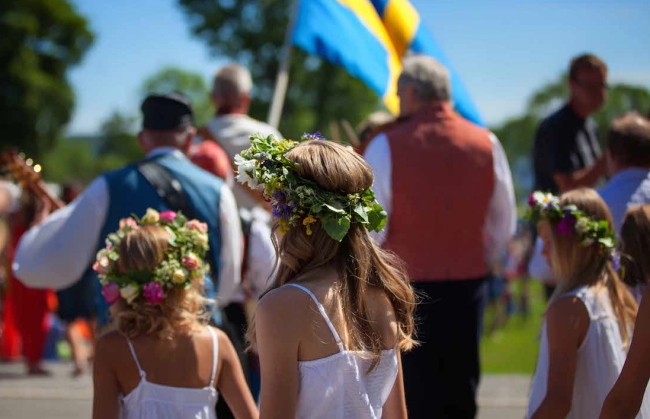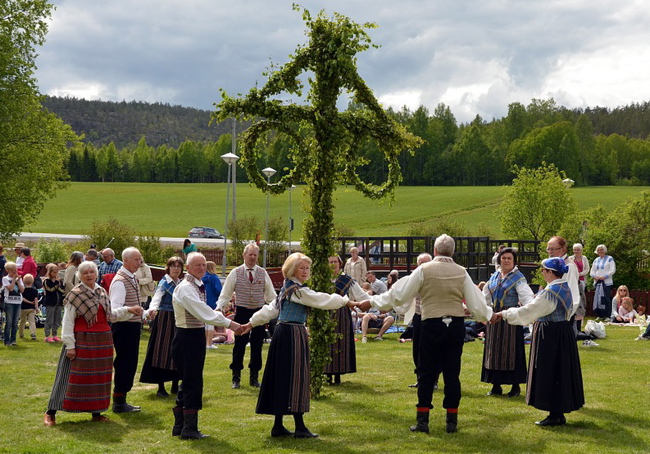SUNDAY, JUNE 20 and THURSDAY, JUNE 24: Picnics on the beach, wreaths of wildflowers, bonfires and Midsummer parties—Scandinavian-style—abound: Across the Northern Hemisphere, June 20 brings the summer solstice; on June 24, countries across the globe celebrate Midsummer.
For people around the world, Midsummer has been equated with greenery, fertility rituals and medicinal herbs for millennia. In Scandinavian countries, the longest day is one of the most beloved holidays of the year. A Scandinavian Midsummer is complete with an entire day’s worth of outdoor activities for citizens young and old: extravagant smorgasbord lunches, outdoor games for the entire community, dancing and more.
Flower crowns: This ancient accessory for Midsummer fetes is as easy as gathering a few favorite flowers and basic craft materials. For a tutorial on how to create a chic one, check out Lauren Conrad.com.
The Midsummer menu is as dear to Scandinavians as the Christmas goose or ham is to celebrants of the winter holiday, and fresh strawberries often take center stage in cakes, shortcakes or eaten straight out of the bowl. Other traditional foods include the season’s first potatoes, made with dill and butter; a roast; herring or other types of fish and seafood; hard-boiled eggs and summer cabbage. For recipes, visit Bon Appetit.
MIDSUMMER AROUND THE WORLD
In Finland, the summer holiday unofficially starts with Midsummer, and so many flock to countryside cottages that city streets can seem eerily empty. Saunas, bonfires, barbecues and fishing are enjoyed by hundreds.
Did you know? June 24 is also the Christian Nativity of St. John the Baptist.
Two northeastern towns in Brazil have been in lengthy competition for the title of “Biggest Saint John Festival in the World,” and throughout the South American country, dishes made with corn and sweet potatoes are favored.
In Austria, a spectacular procession of ships makes its way down the Danube River, while fireworks light up the night sky above castle ruins. In Latvia, homes, livestock and even cars are decorated with leaves, tree branches, flowers and other greenery.
The largest American celebrations of Midsummer take place in New York City, Seattle, Tucson and San Francisco. In Michigan’s Upper Peninsula, members of the large Finnish population celebrate Juhannus with beachfront bonfires and other outdoor activities.
LITHA: A WICCAN AND PAGAN SOLSTICE EVENT
Many Wiccans and Pagans observe Litha, a holiday of gratitude for light and life. At Litha, adherents note the full abundance of nature at the point of mid-summer. Traditionally, fresh fruits and vegetables are the main course at shared meals, and bonfires are lit to pay homage to the full strength of the sun. In centuries past, torchlight processions were common; at Stonehenge, the heelstone marks the midsummer sunrise as viewed from the center of the stone circle.

